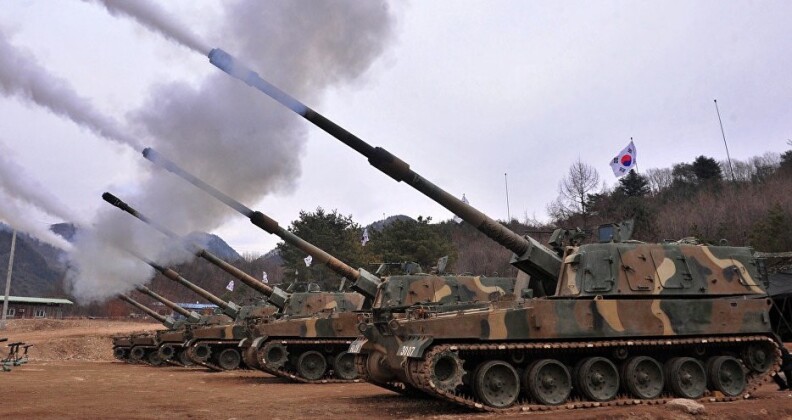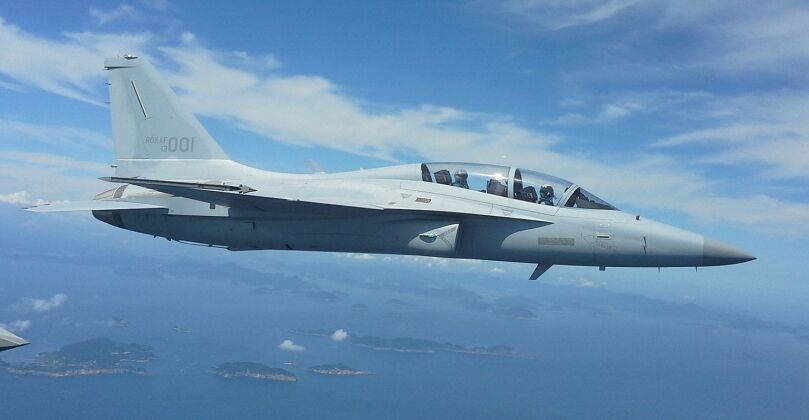News
South Korea Produces the Best NATO-Compatible Tanks, Howitzers and Trainer Jets – And Poland Just Acted On It
On July 27 Poland and South Korea formalised a long anticipated landmark agreement on the delivery of over 1500 tanks and self propelled howitzers and 48 fighter jets, which represented the largest single arms export contract signed by the East Asian state as it emerges as a leader on the global arms market. The contract comes as South Korean armaments have increasingly been recognised in a growing number of fields as more capable than their counterparts produced in the Western world or Japan, and thus as the most formidable NATO-compatible options available. The three products acquired by Poland under the new contract the K2 Black Panther tank, K9 Thunder self propelled howitzer and FA-50 lightweight fighter are all strong examples of this. Where Western countries have introduced very few new tank designs since the early 1980s, and only the British Challenger 2 in very small numbers since the Cold War ended which entered service in 1998, the K2 represents a 21st-century vehicle with double engagement range of Western competitors and an autoloader – a feature common to Russian and Chinese tanks which has yet to be introduced in the West. The most notable sign of a NATO compatible main battle tank, the 120mm main gun, distinguishes the K2 and Western and Japanese tanks from the standard 125mm gun size used on Russian, Chinese and North Korean vehicles.

The K2 is considered entirely in a league of its own among NATO compatible tanks, with the Russian T-14 considered it’s only peer a level rival. Poland is hardly the only NATO member state expected to place large orders for the vehicles, with Turkey potentially to produce over 1000 under license domestically as the modified Atlay derivative, while Norway is among others considered a potential client. With a comparable price to the M1A2 Abrams and Leopard 2A7, which are the only Western tanks currently in production and are both modernised variants of designs which have served for over 40 years, the K2 is expected to gain growing market share in Western-aligned states unless competitors with similar performances emerge abroad.
Alongside the K2, the K9 Thunder artillery piece is also considered in a league of its own among NATO-compatible artillery pieces, and is rivalled only by the Chinese PLZ-05A and PLZ-52 and the Russian 2S35 Koalitsiya-SV – although the Russian gun has only been produced in very limited numbers. Both the K2 and the K9 demonstrate an important advantage of South Korea as an arms exporter, which is the size of both its civil industrial base and its military industrial capacity. The K9, for example, can be produced at a rate of 200 per year facilitating quick deliveries, capable logistics support, promise of continuous upgrades, and lower unit costs from economies of scale.

Alongside the successes of the K2 and K9, the F-50 fighter holds a near monopoly among fighters of its weight range in Western aligned states with only the Swedish Gripen serving as a near peer rival – albeit at several times the cost and with a much greater emphasis on air to air combat. The F-50 is in fact a close derivative of the T-50 trainer, which is considered the most capable in terms of combat performance outside China. The very closely related trainer and fighter variants have gained widespread export successes from Senegal and Iraq to the Philippines and Indonesia, with the United States and Canada both considered likely to operate the class as well.
The advantages of South Korea’s industrial capacity to fulfilling contracts was demonstrated by its ability to offer the delivery of 12 F-50s by mid 2023, with all 48 potentially be delivered before Poland receives F-35s, ordered years prior, from the United States. This is particularly important as Warsaw considers passing on its currently serving MiG-29 fighters to Ukraine to bolster its war effort against Russia. While South Korea’s willingness to provide technology transfers and allow for license production in Poland have been important, it is the qualitative edge its three key weapons systems have over NATO-compatible competitors, and its ability to make very fast deliveries, that has made it an ideal supplier. The result will be a further expansion of the East Asian state’s defence sector, as well as considerable pressure on Russia’s Western borders as Poland’s armoured and artillery units emerge as by far the most capable on the European continent.












